Exploring the Rich History and Styles of Clown Costumes
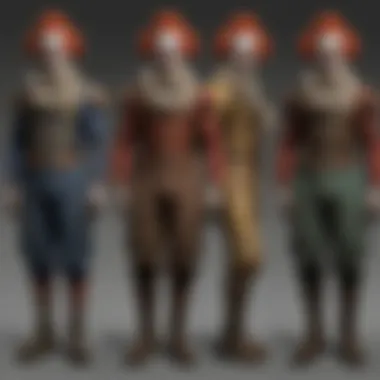
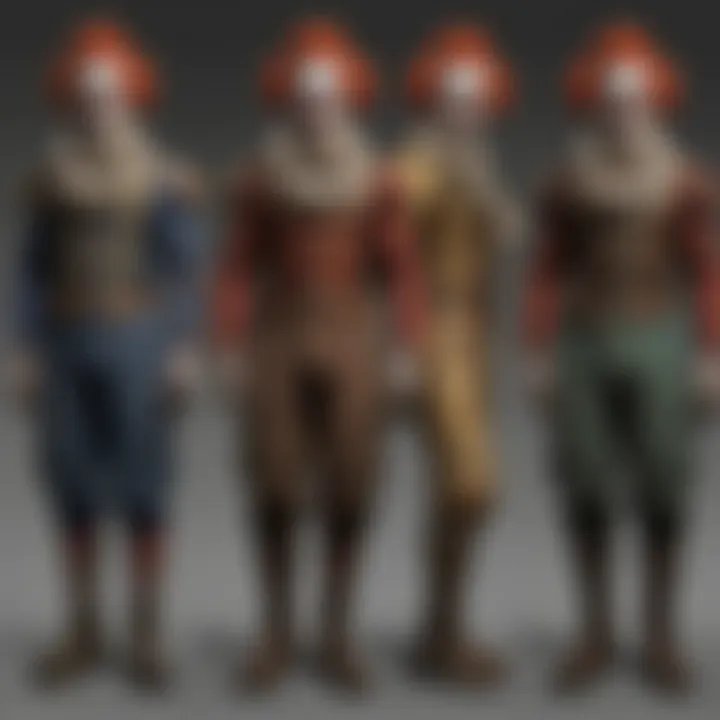
Intro
The intricate world of clown costumes serves as a fascinating intersection of art, culture, and history. Understanding these colorful garments involves exploring their origins, evolution, and societal significance. This article will guide the reader through the various elements of clown attire, including visual styles, historical factors, and the accompanying cultural narratives. As performers, clowns have utilized costumes not merely as adornments but as essential tools for storytelling and emotional expression.
Historical Origins of Clown Costumes
The origins of clown costumes trace back centuries, primarily to theatrical performances. Early iterations were often linked to commedia dell'arte in Italy during the 16th century. Characters like Harlequin and Pierrot showcased distinctive attire that blurred the lines between comedic and tragic elements. These performances highlighted the emotional range that clown costumes could express. The evolution of these outfits continued through different artistic movements and eventually contributed to the modern clown attire seen in circuses and children's entertainment.
Styles of Clown Costumes
Clown costumes vary greatly, influenced by historical context and individual creativity. Notable styles include:
- Augustes: Typically characterized by oversized clothes and exaggerated makeup, this style emphasizes humor and folly.
- Whiteface Clowns: The most traditional form, featuring a fully painted white face with intricate designs. This style balances between humor and sophistication.
- Character Clowns: These clowns portray specific characters, embodying unique traits through their costumes. They often reflect a narrative or moral lesson.
Each style carries distinct artistic elements, such as patterns, colors, and textures. The patterns range from polka dots to stripes, building a unique visual language that attracts the audience's attention. Bright colors serve to evoke emotion, from joy to sadness, aligning with the clown's performance.
Cultural Significance of Clown Costumes
The cultural impact of clown costumes extends beyond mere performance. In many societies, clowns are seen as figures that challenge social norms. Their exaggerated appearance and behavior can prompt audiences to reflect on societal issues. Furthermore, clown costumes have varying implications depending on context; for example, they can symbolize innocence in children's entertainment or evoke ambivalence in horror contexts, as seen in films like "It."
"The psychological implications of clowns deeply influence how they are perceived in different cultural settings, showcasing the duality of laughter and fear."
The use of costumes allows clowns to transcend ordinary life, encouraging deeper engagement with audiences. This transformation serves to highlight the emotional spectrum that performance art embodies.
End
Analyzing clown costumes unveils a rich tapestry of history, artistry, and culture. From their theatrical roots to their complex cultural roles, these garments serve as vital components in understanding clown identity. Each element, from colors to character portrayal, contributes to the broader narrative of performance and its impact on society.
Prolusion to Clown Costumes
Clown costumes are not just colorful attire; they represent centuries of cultural evolution and artistic expression. Understanding the significance of clown costumes is crucial for grasping how cultural narratives unfold through performance art. Clowns, in their many forms, serve as mirrors to society, often reflecting its values, fears, and joys.
In this exploration, we focus on several key elements regarding clown costumes. Firstly, their historical context provides insight into how clowning evolved from ancient theatrics to modern interpretations. The fabrics and styles used hint at the socio-economic conditions of their times, revealing deeper meanings behind what might initially seem mere entertainment.
Secondly, clown costumes utilize color and design elements to evoke specific emotional responses from audiences. These choices are not arbitrary; they are chosen for particular effects in performance and communication. Understanding these colors and styles guides us in understanding larger cultural trends and psychological impacts within societies.
Moreover, the introduction of signature accessories—such as oversized shoes, wigs, and props—highlights the distinctive nature of clown characters. Each element plays a vital role in shaping perception and identity within the clowning sphere.
For fans and followers of practicing clowns, such as those associated with performance cultures or therapy sessions, recognizing these aspects solidifies an appreciation for the art of clowning, opening avenues for deeper engagement with their performances.
Thus, exploring clown costumes not only enriches our understanding of performance art but also invites contemplation on larger societal issues. How do these costumes influence perceptions of humor and sadness? What do they reveal about different cultures' views on laughter and folly?
"The costume of a clown embodies the paradox of joy and melancholy, serving as a canvas for cultural reflection."
As we dive deeper into the specifics of clown costumes, we will uncover rich layers that contribute to this enduring art form.
Historical Origins of Clown Costumes
The historical origins of clown costumes offer a crucial lens through which to understand the development of this distinctive form of performance art. Exploring these origins reveals how the costumes serve not only as visual markers of the clown identity but also as reflections of broader societal norms, values, and artistic practices. Recognizing the historical context allows us to appreciate the costumes' significance in both entertainment and culture over the ages.
Ancient Roots in Theater
The role of jesters in medieval courts
Jesters in medieval courts played a pivotal role in shaping early clown costumes. They served as both entertainers and commentators on the social order, utilizing humor to provide insight into political and cultural issues. The colorful attire of jesters, often adorned with bells and patches, stood out among the monotone clothing of their royal counterparts. This visibility made jesters relatable, bridging the gap between the elite and the common folk. Their unique ability to mock authority while entertaining made them a crucial element of courtly life, paving way for a type of performance that placed value on humor and satire.
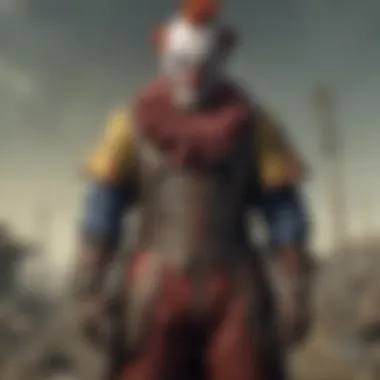
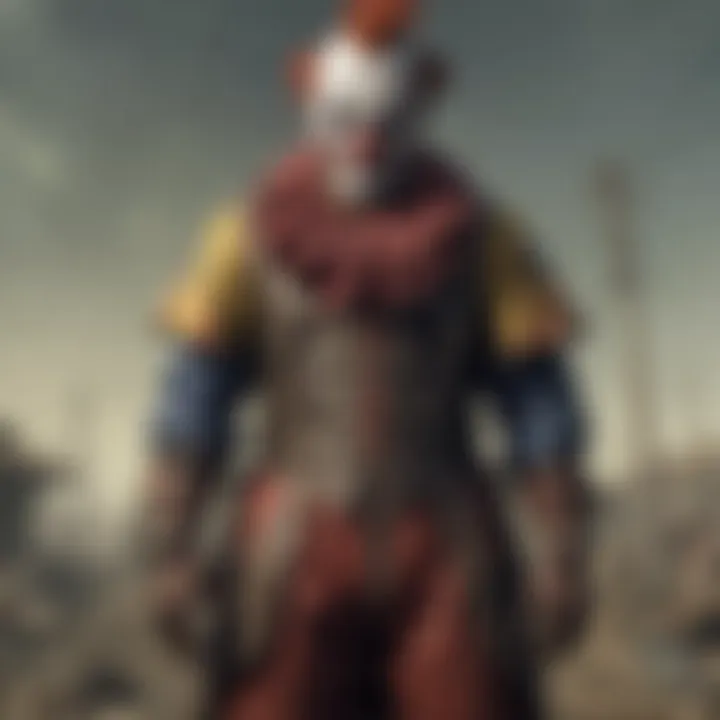
The jesters' costumes were carefully crafted not just for amusement, but also to symbolize the complex relationship between social classes. Their exaggerated features, such as pointed hats and vibrant colors, allowed for a specific expression of frivolity that juxtaposed more serious themes. This aspect is particularly beneficial in understanding how clown costumes evolved from these roots into broader theatrical expressions.
Commedia dell'arte and its influence
Commedia dell'arte, originating in the 16th century, brought a structured yet improvisational form of theater that significantly influenced clown costumes. The use of stock characters in this theatrical tradition, such as Harlequin and Pierrot, established a set of recognizable looks that mingled performance art with elaborate attire. The masking technique prevalent in Commedia dell'arte not only diversified the aesthetic of clown costumes but also encapsulated the emotional and social commentary integral to each character. Each mask and costume communicated distinct personalities and societal roles, making it easier for audiences to engage with the narratives.
The unique feature of Commedia dell'arte is its blend of humor, emotion, and commentary, ensuring that the clown persona could traverse various social discussions seamlessly. This characteristic enhances the understanding of clown costumes by linking them closely to their dignity and artistry, making a profound impact on how clowns would be represented subsequently.
Evolution Through the Ages
Renaissance to the modern era
The transition from the Renaissance to modern clown costumes highlights significant stylistic changes influenced by cultural dynamics and technological advancements. The Renaissance saw a focus on innovations in fashion, which slowly permeated into the design of clown attire. Costumes began to exhibit greater sophistication, incorporating intricate patterns and diverse fabrics. This period marked a shift from the utilitarian clown clothing of jesters to a more elaborate aesthetic, which aimed to capture and reflect public interest.
The key characteristic of this era was the transformation of clown costumes into a canvas for artistry. They no longer merely served the purpose of entertainment but also became an element of visual culture, embodying shifts in societal expectations and norms. This observation makes it a popular choice for analysis since it highlights how clown costumes mirror evolving historical aesthetics.
Influence of circus culture
Circus culture revolutionized clown costumes through its emphasis on spectacle, variety, and audience engagement. As circuses gained popularity in the 19th century, clowns adapted their costumes to create vivid and memorable personas. The bright colors, oversized shoes, and whimsical patterns became hallmarks of clown fashion, establishing a set of standards for what constituted a clown appearance.
The unique feature of this cultural influence lies in its focus on mass appeal. Circus clowns had to engage audiences beyond mere performance, leading to costumes designed for expressiveness and visibility. This makes it a critical aspect of understanding clown costumes in the context of their impact on culture and entertainment, as they became symbols of joy and laughter in public spaces.
Key Elements of Clown Costumes
The examination of clown costumes reveals numerous essential components that contribute to their identity. Clown costumes are not mere clothing; they serve as an avatar for expressing humor, emotion, and theatricality. Understanding these key elements is vital to grasping the overall impact of clowns in various contexts.
Color Psychology
Symbolism of colors in performance
Colors play a formidable role in performance art. In clowning, specific colors are often chosen to convey different emotions or themes. Red can symbolize joy, while blue might evoke sadness. This choice of color can profoundly influence audience perception, making symbolism crucial in clown art. Bright colors tend to attract attention, which is beneficial for performers seeking engagement. However, the overuse of color can lead to visual chaos, diminishing the intended impact.
Emotional responses to color combinations
Color combinations can create emotional narratives. For example, a combination of orange and purple may suggest a playful yet mischievous character. Recognizing how these hues align can enhance the storytelling aspect of clown performances. Additionally, some combinations may clash, leading to confusion rather than clarity. Striking the right balance is essential for effective clown attire, as it dictates audience emotional responses.
Material Choices
Fabrics used in clown costumes
The choice of fabric in clown costumes affects both appearance and functionality. Materials like cotton, polyester, and velvet are common due to their durability and ease of movement. Cotton is popular for its breathability, which is essential during performances. Heavy fabrics, while visually striking, can hinder physical agility. Choosing the right fabric ensures a balance between style and performance requirements.
Functional vs. aesthetic considerations
The debate between functionality and aesthetics is ongoing in clown costumes. Performers need flexibility to execute physical routines. Thus, costumes must be visually appealing without compromising ease of movement. A costume looking good on stage may hinder performance, causing a disconnect between the clown and the audience. This delicate balance must be struck to maintain theatrical effectiveness.
Signature Accessories
Footwear styles and their significance
Footwear is often overlooked but serves as a defining feature of clown attire. Shoes come in various forms, from oversized boots to slip-ons adorned with vibrant colors. These choices reflect character traits and amplify humor. Large footwear can exaggerate movements, adding comedic effect. However, comfort is critical; poorly chosen shoes can lead to injury, distracting from performance.
The importance of props in performances
Props are integral to clowning, enriching the narrative and engaging the audience. Items like juggling balls or oversized canes can emphasize a clown's personality. They enable storytelling, supporting the visual and emotional landscape of performances. While props enhance creativity, they can become cumbersome if not utilized effectively. Proper integration of props can elevate the overall show, making them indispensable to clown performers.
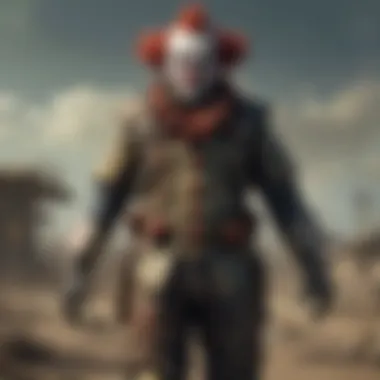
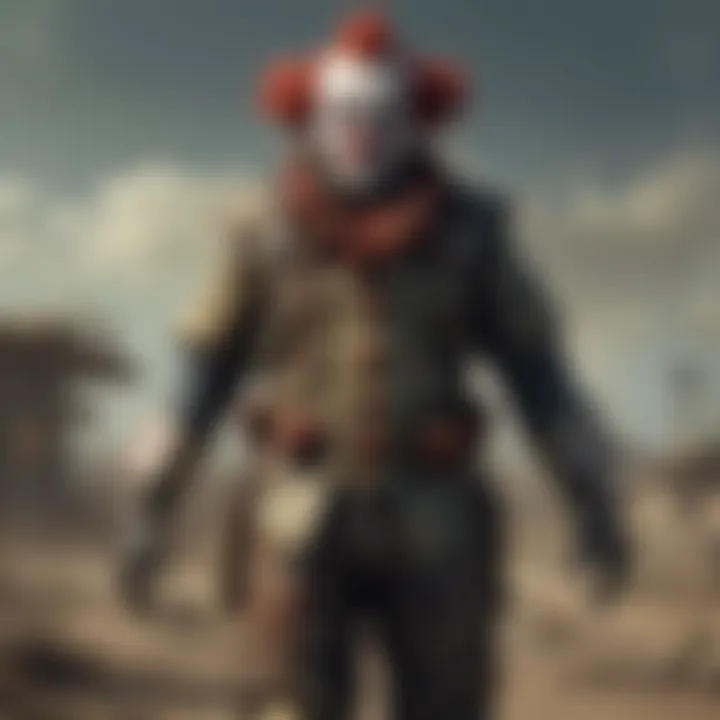
Diverse Styles of Clown Costumes
Understanding the diverse styles of clown costumes is crucial for grasping how they have evolved and their role in cultural narratives. Each style reflects not just artistic choices, but also the broader societal values and emotions they embody. Different clown costumes represent various comedic traditions and contribute to the identity of clowning as both an art form and a means of communication. Examining these styles can provide insight into their historical context, the artist’s intentions, and the audience’s perceptions.
Classic Circus Clowns
Characteristics of traditional clown outfits
Traditional clown outfits, commonly associated with classic circus performances, feature distinctive and exaggerated elements. Bright colors, oversized shoes, and unique facial paint create an instantly recognizable look. The benefit of such characteristics lies in their ability to attract attention and evoke laughter. A key feature of traditional costumes is the mismatch in proportions, which often serves to amplify comedic elements.
The oversized shoes, for example, not only add a humorous touch but also serve as a symbol of the clown's larger-than-life persona. This visual impact reinforces the relationship between the clown and its audience, making performances memorable and engaging.
Legendary figures and their costumes
The costumes worn by legendary clowns like Emmett Kelly and Pagliacci provide a rich perspective on the evolution of clown attire. Emmett Kelly, known for his sad-faced “Weary Willie” persona, wore tattered clothing that portrayed a deeper sense of tragedy within comedy. This unique characteristic of blending humor with pathos offers valuable insights into the emotional depth of clowning. Such costumes carry weight as they help communicate complex emotions, enhancing the audience’s experience. This blend of styles appeals not just for nostalgia but also as a medium through which deeper societal issues can be explored.
Theatrical and Street Clowns
Costumes in stage performances
Stage performances often employ costumes that reflect a variety of theatrical elements. These costumes are designed for visibility under stage lights, often incorporating reflective materials or bold patterns. A significant characteristic of stage costumes is their ability to convey character traits quickly. For instance, a brightly colored ensemble can immediately signify a clown's jovial nature, while muted tones may denote sadness. Users often incorporate various textures and layers, adding depth to the visual narrative. This design strategy reinforces the connection between audience and performer, making the storytelling more impactful.
Urban culture and modern interpretations
The rise of urban clown culture has led to fascinating modern interpretations of clown costumes. These interpretations often draw from current fashion trends and cultural references. A hallmark of contemporary street clowns is their adaptability to various settings. They might mix traditional elements with everyday clothing, capturing the chaotic essence of urban life. This versatility makes them highly relatable, blurring the lines between performance and reality. However, this modern approach often results in mixed receptions. While some praise the innovation and relatability, others may feel that it strays too far from traditional clowning.
Cultural Variations
Clowning traditions across the globe
Clowning traditions vary remarkably across different cultures. For example, the Japanese "Kyogen" incorporates satire and a unique costume aesthetic, contrasting sharply with the Western clown costume style. This global perspective highlights the shared human experience of using humor to address social and political themes, while also celebrating distinct cultural identities. By embracing diverse clowning traditions, audiences gain a richer understanding of the art form.
Regional differences in attire and performance
Regional variations in clown attire reveal much about local customs and social norms related to comedy and performance. In some cultures, traditional attire can signify status or societal roles. For instance, Indian "Nautanki" performers wear different costumes that reflect character details and local cultural motifs. This not only helps reinforce regional identities but also presents unique opportunities for the performance to resonate within various societal frameworks. The consideration of these regional differences enriches the overall understanding of clowning, emphasizing that the art of the clown extends far beyond mere entertainment.
Psychological and Societal Implications
The study of clown costumes offers a window into psychological and societal implications that extend beyond mere entertainment. Costumes serve as a transformative element, allowing performers to transcend their identities and embody various personas. This section will explore the deep-rooted meanings behind clowning and how they resonate with audiences.
The Clown Archetype
Understanding the clown persona
The clown persona represents a complex mix of humor and tragedy. Each clown embodies a unique character, often reflecting societal norms or criticisms. The characteristic feature is the exaggerated makeup and costumes, which serve to amplify their emotions. Understanding this persona allows us to see clowns not just as entertainers but as social commentators. This perspective is vital for grasping the layers beneath the jovial exterior. The uniqueness of the clown persona lies in its duality. Clowns can be seen as both a source of joy and a reflection of deeper societal issues.
Symbolism of laughter and tears
Laughter and tears are dual symbols that encapsulate the clown's role in performance. Laughter often represents joy, a release of tension, while tears signify sadness or the acknowledgment of sorrow. This complex interplay is crucial in clowning; it evokes emotional responses that resonate with the audience's experiences. The essential feature of this duality is its ability to connect through shared human experiences. The balance of these emotions can draw a deeper understanding of life's cyclical nature. However, this symbolic representation can also create a disconnection for some viewers, leading to varied interpretations of clowns in contemporary contexts.
Cultural Perceptions of Clowns
Fear of clowns in modern society
Fear of clowns, or coulrophobia, has become a notable phenomenon in recent years. This fear can stem from the unsettling contrast between a clown's colorful appearance and the often hidden messages they convey. This cultural perception has significant implications for how clowns are viewed in society today. The key characteristic of this fear is its pervasive nature in popular culture, often leading to negative portrayals in various media. This aspect opens discussions about deeper psychological fears related to trust and authenticity. Nonetheless, the fascination with this fear can generate mixed responses, as it fuels both curiosity and avoidance in the public realm.
Clowns in popular media and their representation
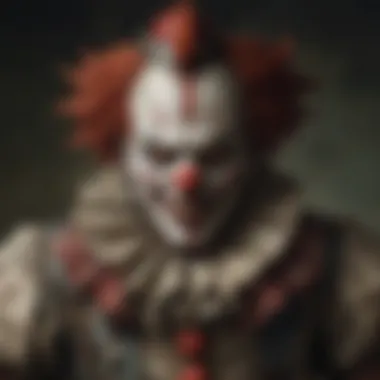
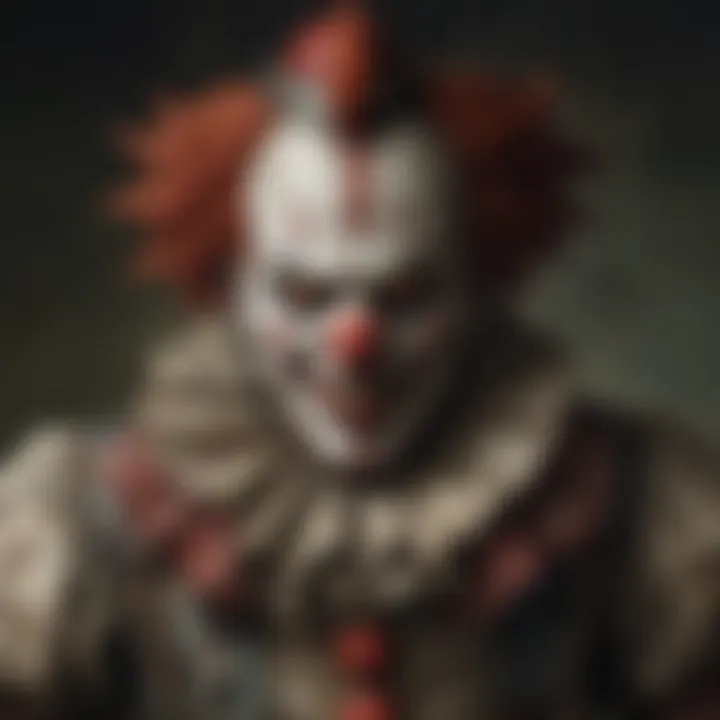
Clowns have found a prominent place in popular media, often depicted in ways that challenge traditional perceptions. Films like It and The Joker showcase clowns as figures of chaos, exploring darker themes associated with mental health and societal breakdown. This representation is significant, as it affects how audiences perceive clowning as a whole. The characteristic feature of this portrayal lies in its stark contrast to the expected joviality of clowns. While such depictions can create a lasting impact, they can also complicate the understanding of clowning as an art form. Balancing this portrayal with the traditional role of clowns in entertainment is a challenge that continues to evolve in contemporary narratives.
"The duality of the clown's existence—expressing joy and sorrow—offers a profound reflection on the human condition, making their costumes and performances rich with meaning."
In essence, the psychological and societal implications surrounding clown costumes reveal intricate connections with culture, identity, and behavior. These themes are essential to explore, especially as perceptions continue to evolve in a rapidly changing social landscape.
Clown Costumes in Contemporary Contexts
The exploration of clown costumes in contemporary contexts is vital for understanding their enduring relevance in modern society. As society evolves, so do the interpretations and meanings associated with clown attire. This section examines two primary aspects: the influence of digital platforms on clown imagery and the therapeutic role of clowns. These elements not only show the costumes' adaptability but also underscore their potential impact on emotional well-being.
Costumes in the Digital Age
Influence of social media on clown imagery
Social media has transformed the way clown imagery is perceived and shared. Platforms like Instagram and TikTok provide spaces for people to showcase their unique clown styles, expanding the audience beyond traditional settings. The visual nature of social media allows for vibrant displays of costumes, enhancing their appeal. This reach helps revive interest in clown culture, which may have waned in recent years.
One key characteristic of this influence is the viral nature of content. Clowns can easily gain recognition through creative costumes and performances, which are often shared widely. This phenomenon has led to a contemporary resurgence in clown art and performance. However, there are disadvantages as well, including potential misinterpretations and negative stereotypes that can arise from exaggerated portrayals.
Marketing and merchandising of clown costumes
The marketing and merchandising of clown costumes take advantage of this newfound popularity. Many businesses now offer a wide range of clown outfits, from classic designs to modern interpretations. This variety caters to diverse audiences, ensuring something for everyone. The ease of online shopping has made clown costumes more accessible.
The unique feature of this marketing strategy is the use of collaborations with influencers. Such partnerships can introduce clown culture to broader audiences. However, the challenge lies in maintaining authenticity while commercializing clown imagery. Balancing tradition with modern trends becomes essential to preserve the history and meaning that clown costumes embody.
The Role of Clowning in Therapy
Clowns as therapeutic figures
Clowns have found a fascinating niche as therapeutic figures, particularly in children's hospitals. These performers use their costumes to bring joy and laughter to young patients and their families. The very appearance of a clown can initiate a sense of playfulness and distraction from challenging situations. This important role highlights how clown costumes can transcend entertainment and enter the realm of emotional healing.
Many therapeutic programs utilize trained clowns to aid in emotional support. The use of clowning in healthcare emphasizes the significance of costume as not just visual but a tool for connection. However, the challenge lies in the need for careful training and understanding of each patient's emotional state. Misplaced humor can lead to misunderstandings.
Impact of clowning on emotional well-being
The impact of clowning on emotional well-being cannot be overlooked. Research indicates that laughter can significantly reduce stress and promote healing. Clowns, through their costumes and antics, play a crucial role in facilitating laughter, especially in difficult circumstances. They create a safe space where individuals can let go of worries and engage in light-hearted fun.
This element underscores the symbolic power of clowning, where the outfit itself embodies hope and resilience. However, one must also recognize that not everyone reacts positively to clowns. The phenomenon of "coulrophobia," or fear of clowns, is real and needs to be handled with sensitivity. This duality reflects the broader societal perceptions surrounding clowning—the fine line between joy and discomfort.
Clown costumes in contemporary settings prove that they are not just remnants of the past; they are vital in shaping cultural conversations and providing emotional support across diverse contexts.
The End: The Legacy of Clown Costumes
The narrative surrounding clown costumes is rich and multifaceted. They encapsulate a range of emotions and social commentaries, intricately woven into the fabric of various societies. In this section, we reflect on the enduring cultural impact of clowns, tracing their journeys through art, literature, and modern contexts while considering the future direction of clown attire.
Reflections on Cultural Impact
Clowns in art and literature
Clowns have long been a source of inspiration in art and literature. From Shakespearean plays to modern novels, they often symbolize the duality of joy and sorrow. This duality is a key characteristic of their representation, making clowns compelling figures in storytelling.
Their portrayal can invoke laughter but also provoke deeper thoughts about human nature and society. This aspect makes clowns a beneficial choice for illustrating complex ideas, which resonates with high-IQ audiences seeking depth in narratives.
In visual arts, the distinct colors and exaggerated features of clowns have sparked countless interpretations. Notably, they challenge traditional norms of beauty and propriety, presenting a unique visual language that speaks to various social conditions.
Enduring fascination with clowning
The fascination with clowning is tied to the relentless allure of performance art. Audiences find themselves drawn to the peculiarities of clowns, and their ability to oscillate between humor and tragedy. This characteristic is significant for reflecting societal issues, making clowning a popular subject in discussions about culture.
The portrayal of clowns in contemporary media, like films and television, often dissect their eccentricities and complexities. This adds layers to the conversation around identity and societal expectations. The unique feature of their enduring relevance lies in their ability to adapt to changing cultural landscapes, though it might also provoke discomfort for some audiences, reminding them of the lighter-sided issues we often face.
Future of Clown Costumes
Emerging trends in clown attire
As social attitudes shift, clown costumes are also evolving. Emerging trends often reflect a blend of traditional aesthetics with modern sensibilities. For example, eco-friendly fabrics gain attention, focusing on sustainability in performance wear.
This evolution is crucial for attracting a new generation that values both the historical significance and ethical responsibility. Clown attire's adaptability facilitates innovative designs, but there are concerns about losing traditional elements amidst these changes.
Preserving tradition in a modern world
Despite emerging trends, a balance is necessary to preserve the essence of clowning. The challenge for current clowns lies in maintaining classic styles while incorporating contemporary elements.
Preserving tradition is significant because it pays homage to the roots of clowning without alienating its modern audience. This blend can strengthen community ties and cultural narratives, showcasing the role of clowns in bridging past and present.
However, caution is required to ensure this respect for tradition does not stagnant growth.







